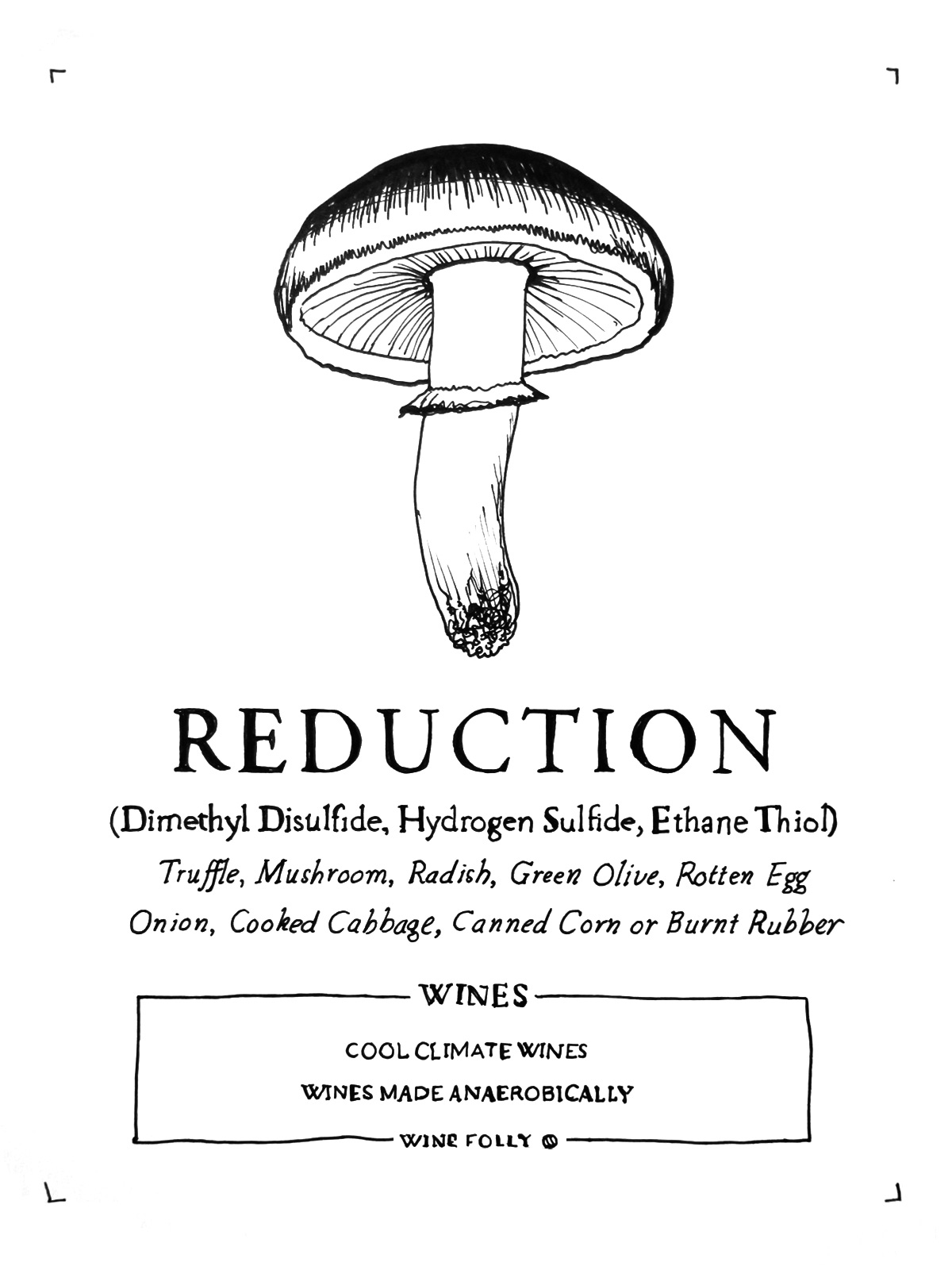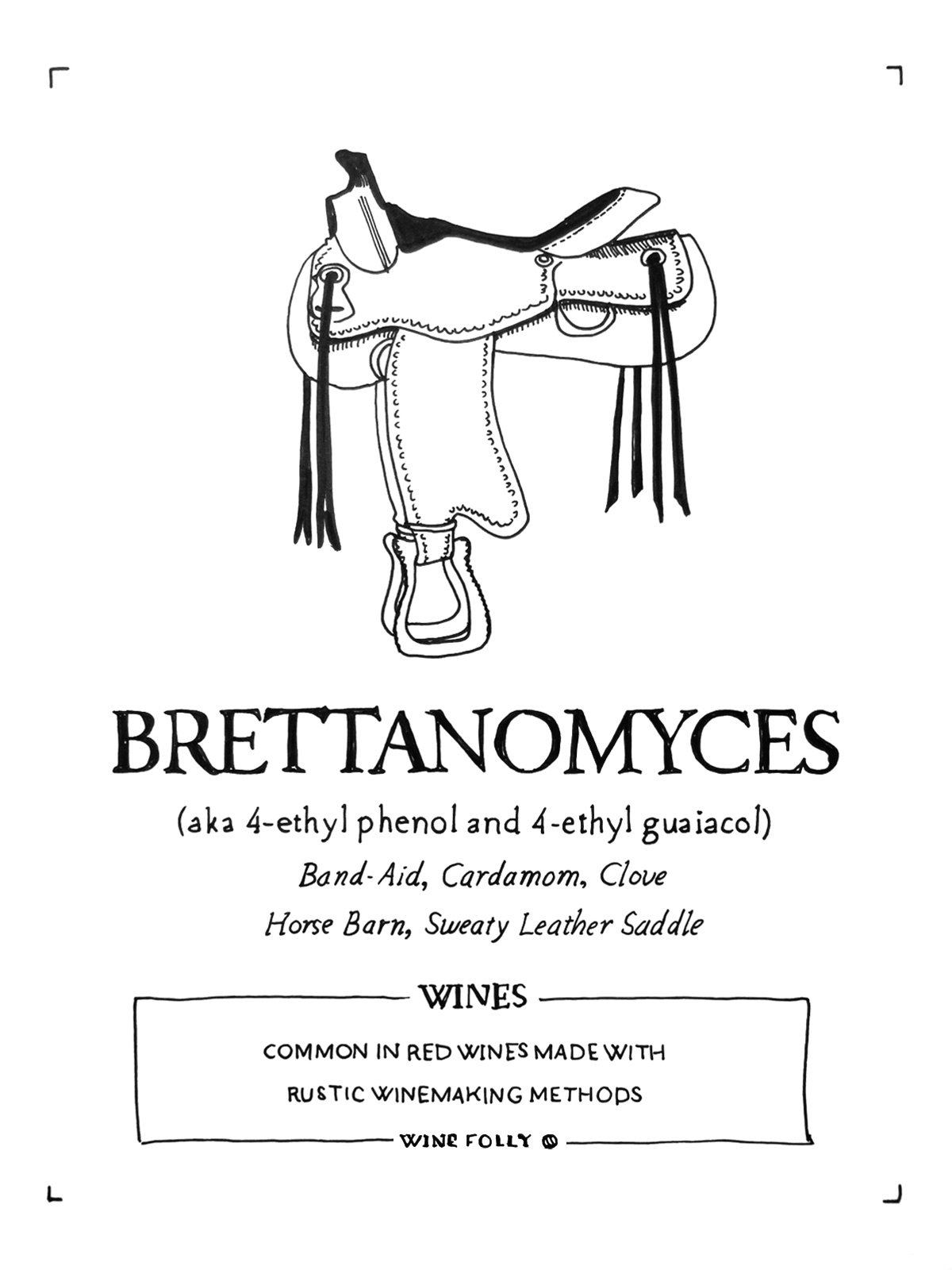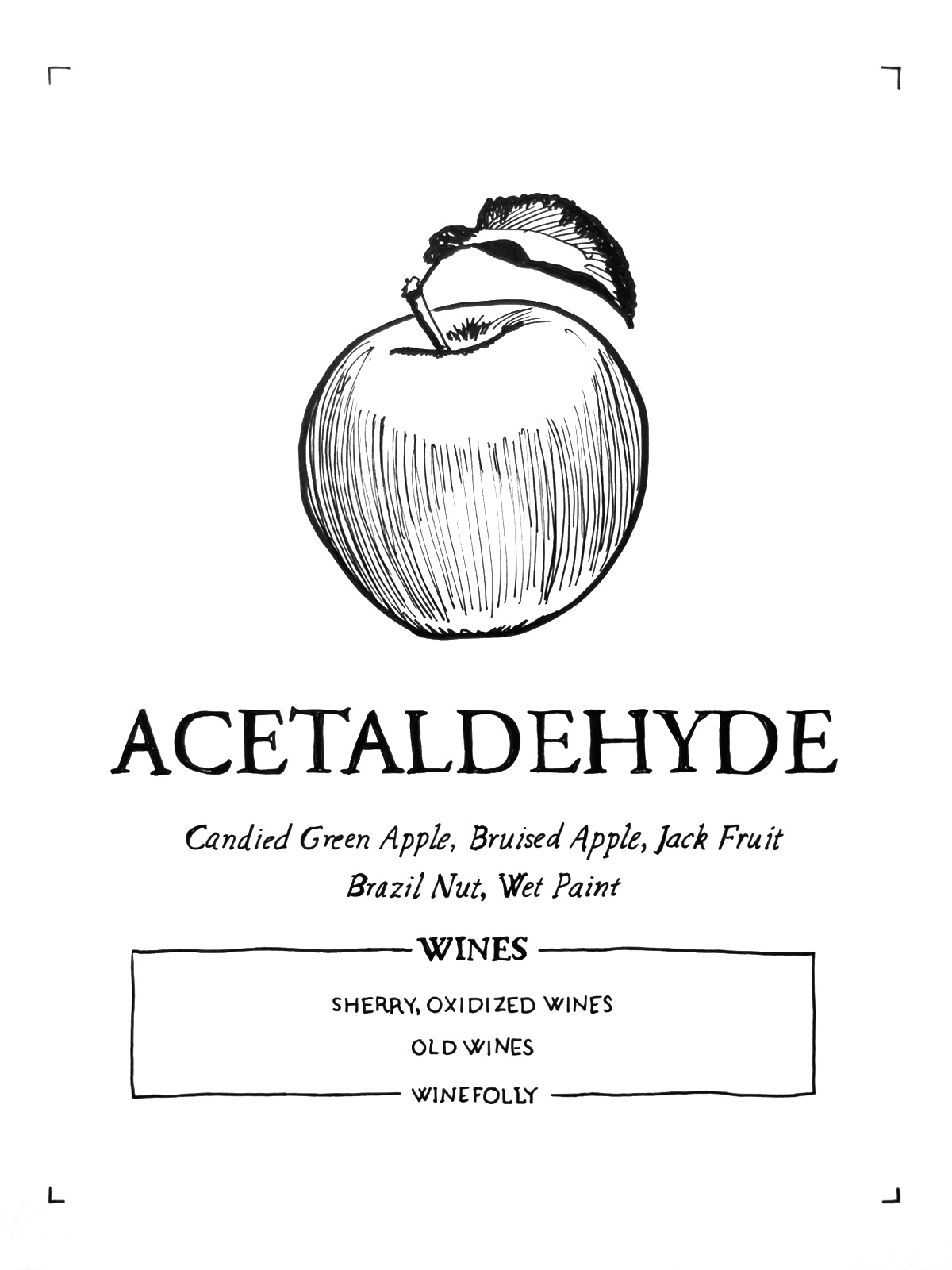If we loved wine just for the fruit, we’d just drink juice. And if that were the case, there would be magazines, books, films, collector’s guides, and ratings all around the topic of juice (and this site would be called “juice folly”).
No, we love wine, partly for the alcohol, but also partly for wild diversity of flavors–many of which are bizarre and require an acquired taste.
The first flavors we learn to identify in wine are fruit flavors, perhaps because these are the most gratifying. However, when you get into wine, it’s hard not to notice all the funky, weird flavors including smells like:
leather, Band-Aid, clove, cooked cabbage and baby diaper.
If you’re scientific minded and curious, you can learn to identify a great deal of aroma compounds (including “impact compounds”) in wine. Next time you have a glass of wine in front of your nose, see if you can pick out one of these more bizarre flavors.

Volatile Acidity
- Compounds: Acetic Acid and Ethyl Acetate
- How it Smells: pungent, vinegar, sharp, fruity raspberry or cherry, nail polish remover
- How it Tastes: sharp or spicy mouthfeel, often towards the end of the finish
As the name suggests, volatile acidity (VA) is referencing volatility in wine, which causes it to go bad. Acetic acid builds up in wine when there’s too much exposure to oxygen during winemaking and is usually caused by acetobacter (the vinegar-making bacteria!). Volatile acidity is considered a fault at higher levels (1.4 g/L in red and 1.2 g/L in white) and can smell sharp like nail polish remover. But at lower levels, it can add fruity-smelling raspberry, passion fruit, or cherry-like flavors. Wines that have long fermentations (1 month or more), such as Amarone della Valpolicella, Ice Wine, and Barolo generally accumulate higher levels of volatile acidity.
Reduction (Sulfur Compounds)
- Compounds: Dimethyl Disulfide, Dimethyl Sulfide, Hydrogen Sulfide, and Ethane Thiol
- How it Smells: truffle, mushroom, radish, green olive, rotten egg, onion, cooked cabbage, canned corn, or burnt rubber
- How it Tastes: noted for adding a very subtle creaminess to the texture of wine
There is some fear about sulfur and its role in wine due to certain people’s sensitivity to sulfites. However, reduction (sulfur compounds) does occur naturally in wine as a result of fermentation (even without sulfite additives) and it contributes to a wine’s aromas. The cause of reduction is a lack of oxygen at certain times during the fermentation which causes a sulfur atom to be used to complete chemical bonds instead of an oxygen atom. At low levels reduction causes truffle, mushroom, radish, and green olive-like smells to wine. These have been accepted as positive traits and increase complexity in the wine. At higher levels, reduction is turns into a fault, giving wines a pungent smell of rotten egg, onion, garlic, cooked cabbage, canned corn, or even burnt rubber.
Brettanomyces
- Compounds: 4-Ethyl Phenol (4-EP) and 4-Ethyl Guaiacol (4-EG)
- How it Smells: clove, cardamom, medicinal, Band-Aid, sweaty leather saddles
Brettanomyces is a wild yeast that produces some particularly funky aromas that range from subtle clove and spice aromas to pungent smells of horse barn, medicinal Band-Aid, and sweaty leather saddles. The latter aromas are the reason why Brettanomyces is commonly considered a wine fault–even though some people love the woodsy, leathery aromas that happen at lower levels. Brett was once much more common before we had the technology to properly clean winemaking equipment. This is why some old world wines have been historically known to have Brett-like flavors associated with them. However, if you taste a wine with these aromas, it’s definitely caused by wild yeasts like Brett.
Acetaldehyde
- How it Smells: candied green apple, apple sauce, bruised apple, jack fruit, brazil nut, wet paint
- How it Tastes: tangy and somewhat sharp on the mid-palate and finish
I’ll admit that it seems a little odd to list a type of poison as an aromatic component in wine. Perhaps this is why it’s good to drink in moderation. That said, acetaldehyde is present in very small amounts in most wines (dry wines usually have between 30–80 parts per million), and is a specific aroma contributor to Sherry and other oxidized wines (Sherries usually have around 300 ppm). Acetaldehyde delivers pleasant fruity notes reminiscent of candied apples at lower levels, and at higher levels it will smell more like bruised or rotten apples, brazil nuts, almonds, and even wet paint.
Last Word
Now that we’ve established that wine isn’t all fruit and flowers, we can revisit wine’s aromas with a new set of expectations. Have fun sniffing!
Up Next: Impact Compounds
The secret to memorizing the taste of different varieties lies in identifying what sommeliers call “impact compounds.” Here are the most important impact compounds to know with Master Sommelier, Matt Stamp.
How To Taste Wine Like A Sommelier
More Reading
If sulfites are a concern for you or people you know, get the facts about them from a quality source. This article on UFAS extension site was useful for researching this article “Sulfites: Separating Fact from Fiction”
Want a lot more? Here is an awesome pdf jam-packed full of wine faults for your reading pleasure.




